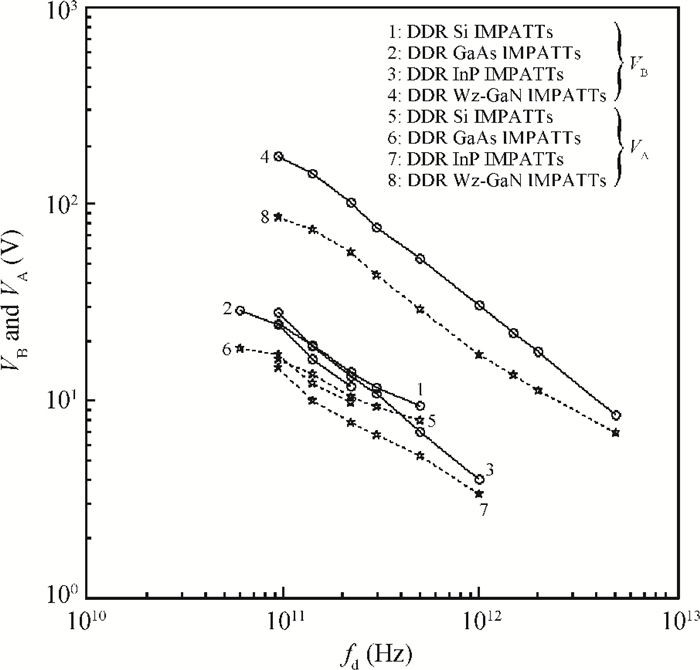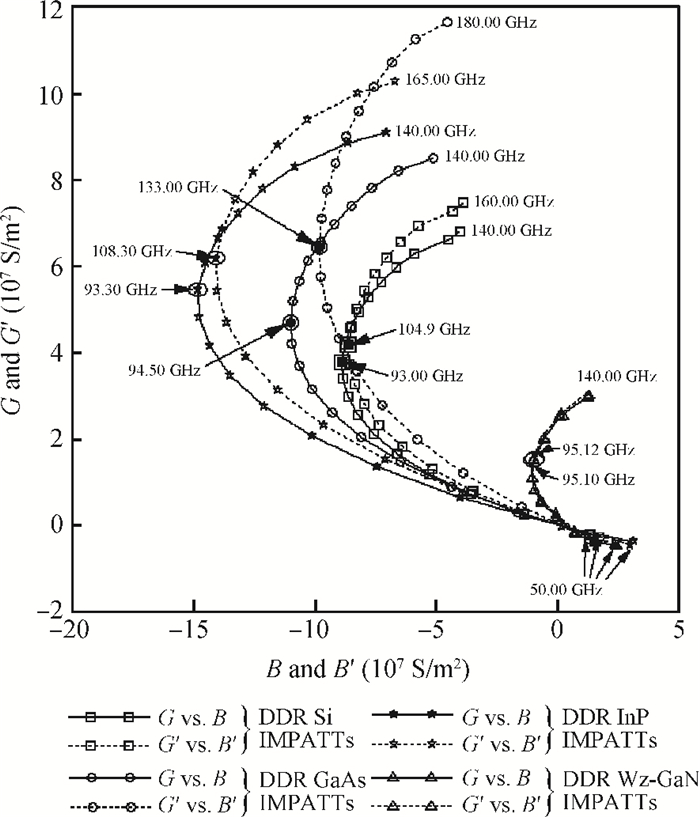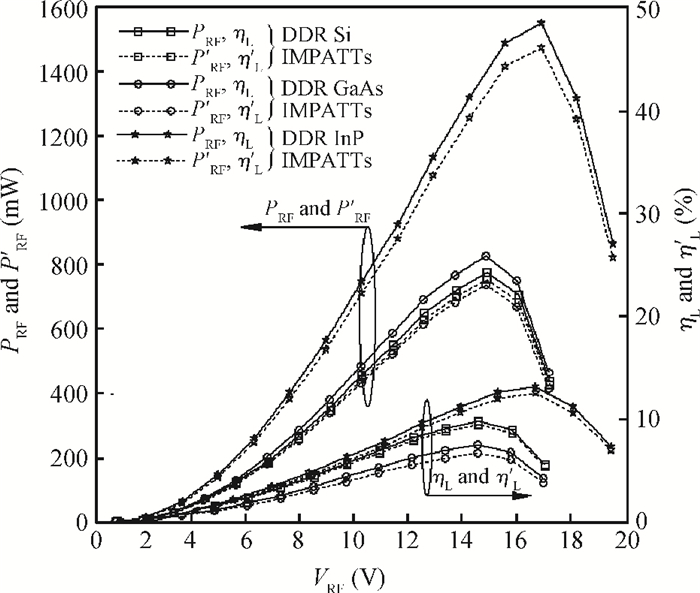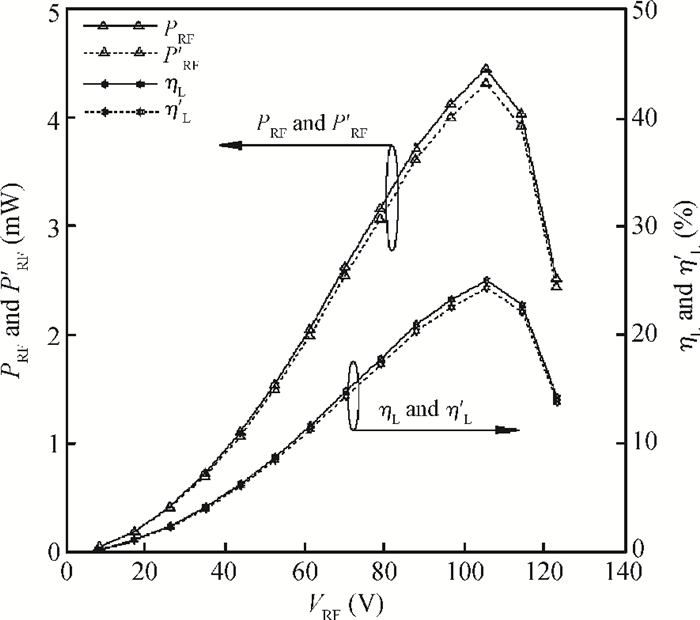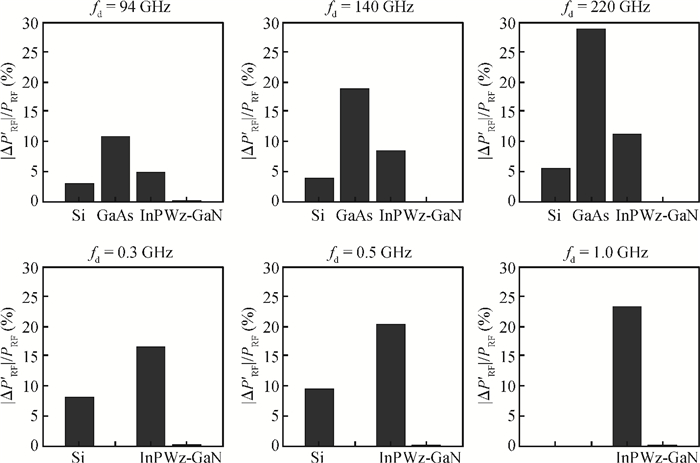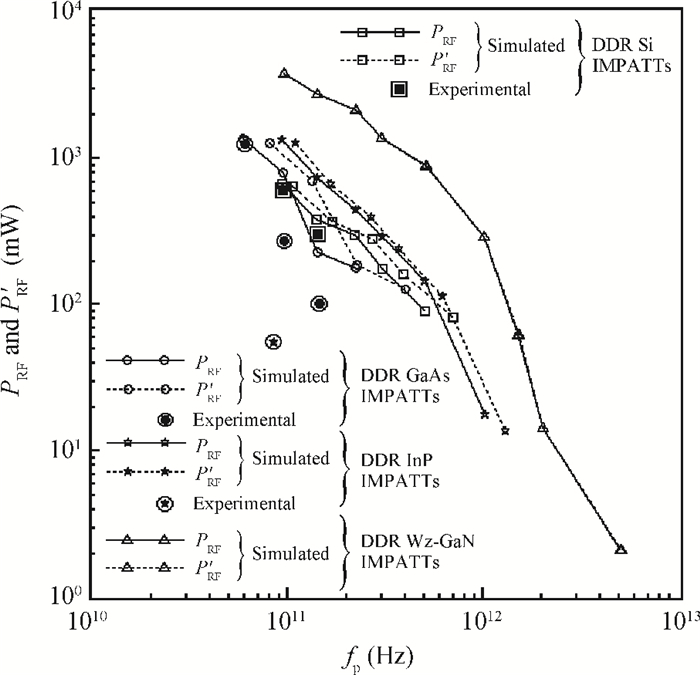| Citation: |
Aritra Acharyya, Aliva Mallik, Debopriya Banerjee, Suman Ganguli, Arindam Das, Sudeepto Dasgupta, J.P. Banerjee. Large-signal characterizations of DDR IMPATT devices based on group Ⅲ-Ⅴ semiconductors at millimeter-wave and terahertz frequencies[J]. Journal of Semiconductors, 2014, 35(8): 084003. doi: 10.1088/1674-4926/35/8/084003
****
A Acharyya, A Mallik, D Banerjee, S Ganguli, A Das, S Dasgupta, J.P. Banerjee. Large-signal characterizations of DDR IMPATT devices based on group Ⅲ-Ⅴ semiconductors at millimeter-wave and terahertz frequencies[J]. J. Semicond., 2014, 35(8): 084003. doi: 10.1088/1674-4926/35/8/084003.
|
Large-signal characterizations of DDR IMPATT devices based on group Ⅲ-Ⅴ semiconductors at millimeter-wave and terahertz frequencies
DOI: 10.1088/1674-4926/35/8/084003
More Information
-
Abstract
Large-signal (L-S) characterizations of double-drift region (DDR) impact avalanche transit time (IMPATT) devices based on group Ⅲ-Ⅴ semiconductors such as wurtzite (Wz) GaN, GaAs and InP have been carried out at both millimeter-wave (mm-wave) and terahertz (THz) frequency bands. A L-S simulation technique based on a non-sinusoidal voltage excitation (NSVE) model developed by the authors has been used to obtain the high frequency properties of the above mentioned devices. The effect of band-to-band tunneling on the L-S properties of the device at different mm-wave and THz frequencies are also investigated. Similar studies are also carried out for DDR IMPATTs based on the most popular semiconductor material, i.e. Si, for the sake of comparison. A comparative study of the devices based on conventional semiconductor materials (i.e. GaAs, InP and Si) with those based on Wz-GaN shows significantly better performance capabilities of the latter at both mm-wave and THz frequencies.-
Keywords:
- DDR IMPATTs,
- GaN,
- group Ⅲ-Ⅴ,
- large-signal simulation,
- millimeter-wave,
- terahertz regime,
- wurtzite
-
References
[1] Midford T A, Bernick R L. Millimeter wave CW IMPATT diodes and oscillators. IEEE Trans Microw Theory Tech, 1979, 27:483 doi: 10.1109/TMTT.1979.1129653[2] Luy J F, Casel A, Behr W, et al. A 90-GHz double-drift IMPATT diode made with Si MBE. IEEE Trans Electron Devices, 1987, 34:1084 doi: 10.1109/T-ED.1987.23049[3] Wollitzer M, Buchler J, Schafflr F, et al. D-band Si-IMPATT diodes with 300 mW CW output power at 140 GHz. Electron Lett, 1996, 32:122 doi: 10.1049/el:19960088[4] Adlerstein M G, Chu S L G. GaAs IMPATT diodes for 60 GHz. IEEE Electron Devices Lett, 1984, 5:97 doi: 10.1109/EDL.1984.25844[5] Eisele H. Selective etching technology for 94 GHz, GaAs IMPATT diodes on diamond heat sinks. Solid-State Electron, 1989, 32(3):253 doi: 10.1016/0038-1101(89)90100-7[6] Tschernitz M, Freyer J. 140 GHz GaAs double-read IMPATT diodes. Electron Lett, 1995, 31(7):582 doi: 10.1049/el:19950390[7] Eisele H, Chen C C, Munns G O, et al. The potential of InP IMPATT diodes as high-power millimeter-wave sources:first experimental results. IEEE MTT-S International Microwave Symposium Digest, 1996, 2:529 http://ieeexplore.ieee.org/xpls/abs_all.jsp?arnumber=510989[8] Trew R J, Yan J B, Mock P M. The potentiality of diamond and SiC electronic devices for microwave and millimeter-wave power applications. Proc IEEE, 1991, 79(5):598 doi: 10.1109/5.90128[9] Mock P M, Trew R J. RF performance characteristics of double-drift MM-wave diamond IMPATT diodes. Proc IEEE/Cornell Conf Advanced Concepts in High-Speed Semiconductor Devices and Circuits, 1989:383 http://ieeexplore.ieee.org/xpls/abs_all.jsp?arnumber=79856[10] Yuan L, James A, Cooper J A, et al. Experimental demonstration of a silicon carbide IMPATT oscillator. IEEE Electron Device Lett, 2001, 22:266 doi: 10.1109/55.924837[11] Vassilevski K V, Zorenko A V, Zekentes K, et al. 4H-SiC IMPATT diode fabrication and testing. Technical Digest of International Conference on SiC and Related Materials, Tsukuba, Japan, 2001:713 http://www.scientific.net/MSF.389-393.1353[12] Acharyya A, Banerjee J P. Prospects of IMPATT devices based on wide bandgap semiconductors as potential terahertz sources. Appl Nanosci, 2014, 4:1 doi: 10.1007/s13204-012-0172-y[13] Acharyya A, Banerjee J P. Potentiality of IMPATT devices as terahertz source:an avalanche response time based approach to determine the upper cut-off frequency limits. IETE Journal of Research, 2013, 59(2):118 doi: 10.4103/0377-2063.113029[14] Scharfetter D L, Gummel H K. Large-signal analysis of a silicon read diode oscillator. IEEE Trans Electron Devices, 1969, 6(1):64 http://ieeexplore.ieee.org/xpls/abs_all.jsp?arnumber=1475609[15] Acharyya A, Banerjee S, Banerjee J P. Effect of junction temperature on the large-signal properties of a 94 GHz silicon based double-drift region impact avalanche transit time device. Journal of Semiconductors, 2013, 34(2):024001 doi: 10.1088/1674-4926/34/2/024001[16] Acharyya A, Chakraborty J, Das K, et al. Large-signal characterization of DDR silicon IMPATTs operating up to 0.5 THz. International Journal of Microwave and Wireless Technologies, 2013, 5(5):567 doi: 10.1017/S1759078713000597[17] Acharyya A, Chakraborty J, Das K, et al. Large-signal characterization of DDR silicon IMPATTs operating in millimeter-wave and terahertz regime. Journal of Semiconductors, 2013, 34(10):104003 doi: 10.1088/1674-4926/34/10/104003[18] Kane E O. Theory of tunneling. J Appl Phys, 1961, 32:83 doi: 10.1063/1.1735965[19] Acharyya A, Mukherjee M, Banerjee J P. Influence of tunnel current on dc and dynamic properties of silicon based terahertz IMPATT source. Terahertz Science and Technology, 2011, 4(1):26 http://www.tstnetwork.org/March2011/tst-v4n1-26Influence.pdf[20] Sze S M, Ryder R M. Microwave avalanche diodes. Proc IEEE Special Issue on Microwave Semiconductor Devices, 1971, 59:1140 http://ieeexplore.ieee.org/stamp/stamp.jsp?arnumber=1450290[21] Kunihiro K, Kasahara K, Takahashi Y, et al. Experimental evaluation of impact ionization coefficients in GaN. IEEE Electron Device Lett, 1999, 20:608 doi: 10.1109/55.806100[22] Ito M, Kagawa S, Kaneda T, et al. Ionization rates for electrons and holes in GaAs. J Appl Phys, 1978, 49:4607 doi: 10.1063/1.325443[23] Kao C W, Crowell C R. Impact ionization by electrons and holes in InP. Solid-State Electron, 1980, 23:881 doi: 10.1016/0038-1101(80)90106-9[24] Umebu I, Chowdhury A N M M, Robson P N. Ionization coefficients measured in abrupt InP junction. Appl Phys Lett, 1980, 36:302 doi: 10.1063/1.91470[25] Grant W N. Electron and hole ionization rates in epitaxial silicon. Solid-State Electron, 1973, 16(10):1189 doi: 10.1016/0038-1101(73)90147-0[26] Shiyu S C, Wang G. High-field properties of carrier transport in bulk wurtzite GaN:Monte Carlo perspective. J Appl Phys, 2008, 103:703[27] Kramer B, Micrea A. Determination of saturated electron velocity in GaAs. Appl Phys Lett, 1975, 26:623 doi: 10.1063/1.88001[28] Canali C, Ottaviani G, Quaranta A A. Drift velocity of electrons and holes and associated anisotropic effects in silicon. J Phys Chem Solids, 1971, 32(8):1707 doi: 10.1016/S0022-3697(71)80137-3[29] Electronic Archive: New Semiconductor Materials, Characteristics and Properties. 2013, http://www.ioffe.ru/SVA/NSM/Semicond -
Proportional views





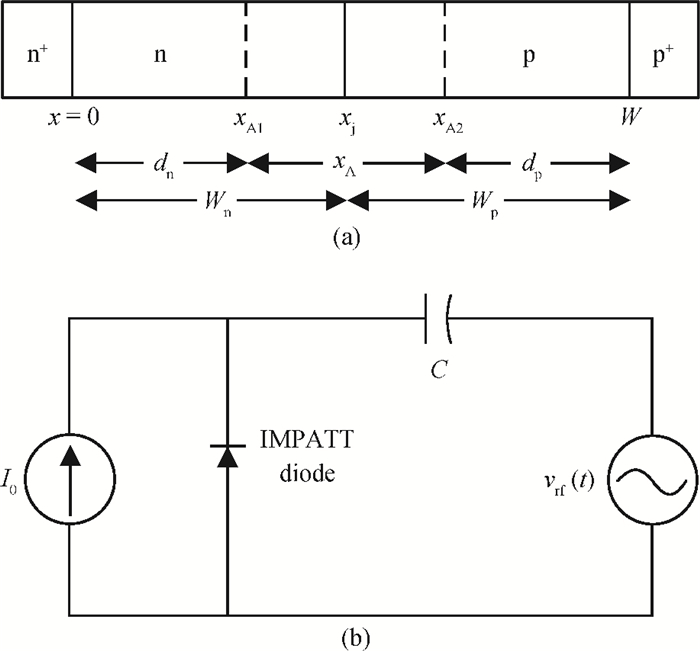
 DownLoad:
DownLoad:
